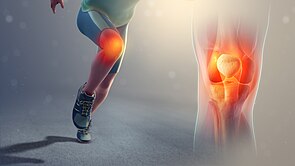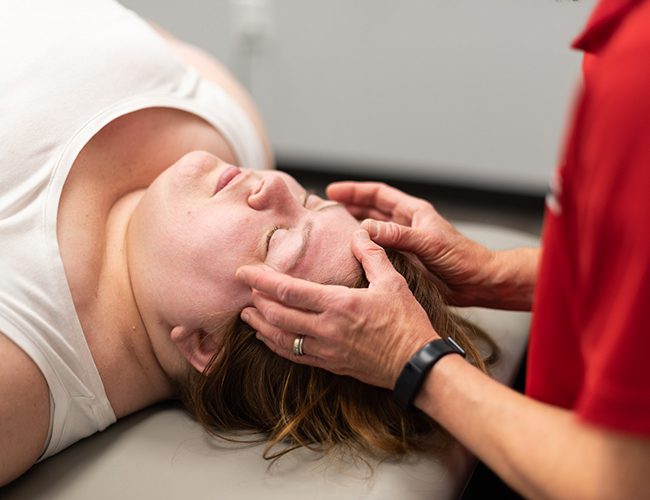Back pain resulting from sports injuries can be debilitating, affecting athletes of all levels. Whether you are a professional athlete or a weekend warrior, understanding how to effectively manage and heal back pain is crucial. In this comprehensive guide, we will explore the causes, treatment options, and preventative measures for back pain caused by sports injuries.
Understanding the Causes of Back Pain in Athletes
Back pain in athletes can stem from various sources. Common causes include muscle strains, ligament sprains, disc injuries, and stress fractures. Each type of injury requires a unique approach to treatment and recovery.
Muscle Strains
Muscle strains occur when muscles are overstretched or torn, often due to sudden movements or excessive force. These injuries are common in sports that require quick changes in direction or intense physical exertion.
Ligament Sprains
Ligament sprains happen when ligaments, the tough bands of tissue connecting bones, are overstretched or torn. Sports that involve high-impact or twisting motions, such as basketball or football, frequently lead to ligament sprains.
Disc Injuries
Disc injuries, including herniated or bulging discs, are prevalent among athletes who engage in activities that involve repetitive bending or heavy lifting. These injuries can cause significant pain and may require extended periods of rest and rehabilitation.
Stress Fractures
Stress fractures are tiny cracks in bones caused by repetitive force or overuse. These fractures are common in sports that involve running or jumping, such as track and field or gymnastics.
Effective Treatment Options for Sports-Related Back Pain
When dealing with sports-related back pain, it is essential to adopt a multifaceted approach to treatment. Below, we outline the most effective methods for alleviating pain and promoting recovery.
Rest and Activity Modification
Rest is crucial for healing most sports injuries. Athletes should modify their activities to avoid movements that exacerbate pain. Depending on the severity of the injury, complete rest or reduced activity levels may be necessary.
Physical Therapy
Physical therapy plays a vital role in the recovery process. A skilled therapist can design a personalized program that includes stretching, strengthening, and stabilization exercises to improve flexibility and support the spine.
Medications
Over-the-counter pain relievers such as ibuprofen or acetaminophen can help manage pain and reduce inflammation. In some cases, prescription medications may be required for more severe pain.
Hot and Cold Therapy
The main ingredient in Pain O Soma 350mg is carisoprodol, a skeletal muscle relaxant with central action. This medicine works by modifying the way that neurons communicate with each other in the central nervous system, which relaxes muscles and relieves pain.
Applying ice packs to the injured area can reduce swelling and numb pain, while heat therapy can relax muscles and improve blood flow. Alternating between hot and cold treatments can be particularly effective.
Chiropractic Care
Chiropractors specialize in treating musculoskeletal issues and can provide spinal adjustments to alleviate pain and improve function. Chiropractic care can be especially beneficial for athletes suffering from back pain.
Massage Therapy
Massage therapy can help relax tight muscles, improve circulation, and reduce pain. Techniques such as deep tissue massage and myofascial release are particularly effective for sports-related injuries.
Acupuncture
Acupuncture, an ancient Chinese practice, involves inserting thin needles into specific points on the body to relieve pain and promote healing. Many athletes find acupuncture to be a valuable component of their pain management strategy.
Surgical Interventions
Pain O Soma 500mg is main medicinal advantage is its capacity to efficiently treat musculoskeletal pain. By addressing the underlying muscle tension and spasm, this medicine offers substantial relief from a variety of diseases, including injuries, sprains, strains, and chronic illnesses.
In severe cases, surgical intervention may be necessary to repair damaged structures within the spine. Procedures such as discectomy, spinal fusion, and laminectomy can provide relief for athletes who do not respond to conservative treatments.
Preventative Measures to Avoid Back Injuries
Preventing back injuries is key to maintaining athletic performance and long-term health. Implementing the following preventative measures can help athletes reduce their risk of injury.
Proper Warm-Up and Cool-Down
Engaging in a proper warm-up before exercise and a cool-down afterward can prepare the body for physical activity and reduce the risk of injury. Warm-ups should include dynamic stretching, while cool-downs should focus on static stretching and relaxation.
Strengthening Core Muscles
A strong core provides stability and support for the spine. Incorporating exercises that target the abdominal, oblique, and lower back muscles can enhance core strength and reduce the likelihood of back injuries.
Maintaining Flexibility
Flexibility is crucial for preventing injuries. Athletes should regularly perform stretching exercises that target the back, hamstrings, and hip flexors to maintain optimal flexibility.
Using Proper Technique
Using proper technique during sports activities is essential for injury prevention. Athletes should work with coaches and trainers to ensure they are performing movements correctly and safely.
Wearing Appropriate Gear
Wearing appropriate protective gear, such as supportive footwear and braces, can help prevent injuries. Proper gear can provide stability and reduce the impact on the spine during high-intensity activities.
Gradual Progression of Intensity
Athletes should gradually increase the intensity and duration of their workouts to allow their bodies to adapt. Sudden increases in activity levels can lead to overuse injuries and strain the back.
Listening to the Body
Athletes should pay attention to their bodies and avoid pushing through pain. Ignoring pain can lead to more severe injuries and longer recovery times. Rest and recovery are vital components of a successful training regimen.
Conclusion
Healing back pain caused by sports injuries requires a comprehensive approach that includes rest, physical therapy, medication, and other treatment modalities. By understanding the causes of back pain and implementing effective treatment strategies, athletes can recover more quickly and return to their activities stronger than before. Additionally, adopting preventative measures can significantly reduce the risk of future injuries, ensuring long-term athletic performance and overall health.




